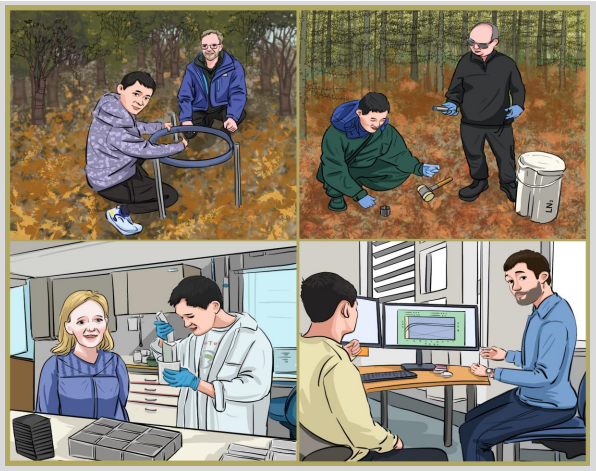Universitetsavisen
Nørregade 10
1165 København K
Tlf: 21 17 95 65 (man-fre kl. 9-15)
E-mail: uni-avis@adm.ku.dk
Ph.d.-forsvar
Ph.d.-forsvar — 14 June 2022 at 13:00
Date & Time:
Place:
Auditorium A2-70.04, Thorvaldsensvej 40, 1871 Frederiksberg
Hosted by:
Section of Forest, Nature and Biomass, Department of Geosciences and Natural Resource Management, Rolighedsvej 23, 1958 Frederiksberg
Cost:
Free
Haifeng Zheng defends his thesis:
“Soil enzyme activity and ecoenzymatic stoichiometry as affected by tree species and their mycorrhizal association”
Supervisors:
Professor Lars Vesterdal, IGN, UCPH
Professor Inger Kappel Schmidt, IGN, UCPH
Professor Johannes Rousk, Lund Univeristy
Assessment committee:
Professor Ina Meier, University of Hamburg, Germany
Associate Professor Petra Fransson, Swedish University of Agricultural Science
Associate Professor Rasmus Kjøller (Chair), Department of Biology, UCPH
Summary:
Studies of tree species effects on soil organic carbon (SOC) stocks have revealed significant impacts on SOC stocks and the vertical distribution between forest floor and mineral soil, but the underlying mechanisms along with links between litter traits, soil properties and the microbiome all remain unclear. Tree species-driven soil enzymatic activity (EA), ecoenzymatic stoichiometry (ES) and microbial community composition may constitute one of the mechanisms behind differences in stocks and vertical distribution of SOC among tree species and could shed light on soil carbon (C) and nutrient economics among tree species with different mycorrhizal association. ES has been used as an approach to infer microbial resource limitation in numerous studies, but only a handful of experimental validations have tested the ability of ES to capture the limiting resources for microbial growth.
This thesis aimed to explore the effects of tree species and mycorrhizal association on soil EA and ES at the stand and global scale and to test the validity of the use of ES to reflect microbial resource limitation. The results from multi-site common garden experiments indicated that that the effects of tree species and mycorrhizal associations on soil EA and ES were linked to variation in leaf litter qualities, microbial community composition, and soil environments and were related to the regulation of stocks and vertical distributions of SOC. The results from the global meta-analysis suggested that soil EA and ES appear to play an important role in shaping the differences in the nutrient economy between arbuscular mycorrhizal and ectomycorrhizal associated tree species, but leaf morphology and soil conditions should be considered in evaluations of soil processes in forests of different mycorrhizal associations. Importantly, the results from laboratory microcosm experiments showed that the ES does not consistently indicate microbial resource limitation, and the resource availability, substrate quality and nutrient demand of microbial growth should be considered in interpretations of enzymatic ratios. This work provided new insights regarding the underlying mechanisms of the effects of tree species and mycorrhizal associations and shed more light on the appropriate use of ES hypothesis in biogeochemical studies, which contributed to informing biogeochemical processes regarding C and nutrient cycling as affected by substrate and plan-soil-microbial interactions.
